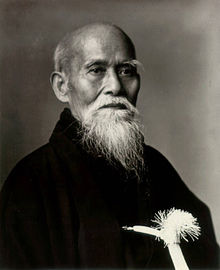The Catch-22 of Productivity
What Fuels Top-Performing Software Companies?
The secret sauce of top-performing software companies often lies in their willingness to explore and implement ideas that fall outside the mainstream. Unlike many companies that stick to orthodoxy and status quo practices, these high-performers embrace the works of thinkers like Deming, Ackoff, Buckminster Fuller, Goldratt, Drucker, Seddon, and Trybus. They find value in methods and theories that many businesses either don’t know about or choose to ignore. This approach fosters a culture of continuous improvement and innovative problem-solving, setting them apart from their competitors.
Why Aren’t These Ideas More Widely Adopted?
There’s a paradox here: The ideas from these thought leaders are available, and their effectiveness has been demonstrated, yet few companies make the leap to implement them. This is usually not due to a lack of resources or information but stems from organisational inertia compounded by ignorance. Companies often feel safer sticking to conventional methods, even when evidence suggests that non-mainstream ideas could lead to significant improvements. This risk-averse mentality can create a barrier to adopting transformative approaches.
How Do Beliefs Impact Productivity?
The collective mindset or shared beliefs within an organisation can serve as either a catalyst or an obstacle to productivity. In high-performing software companies, you’ll often find a culture that not only welcomes but also thrives on unconventional wisdom. This creates a fertile ground for out-of-the-box methods to take root and flourish, driving the company forward in ways that more conventional organisations can’t easily replicate. If you’re curious, my recent book “Quintessence” catalogues and maps over seventy of the unorthodox memes of these top-performing companies.
Can We Simply Adopt Another Company’s Methods?
Transplanting methods from one company to another might seem like a straightforward way to boost productivity. However, those methods were developed within a unique ecosystem, shaped by specific challenges, goals, and culture. Attempting to graft them onto an organisation with differing assumptions and beliefs leads to misalignment, cognitive dissonance, resistance from team members, and even failure of the adopted methods to deliver the expected benefits. “Agile” is a classic example in this regard.
Has Benchmarking Any Value Here?
Many companies rely on industry-standard metrics to gauge their performance, but this approach has its limitations, particularly when comparing against top-performers who use unconventional approaches and thus metrics. These high-performers often evaluate success based on measures specifically tailored to their methods and organisational beliefs. This makes traditional benchmarking ineffective and even misleading when trying to measure up to these high-performing companies.
How Do You Close the Productivity Gap?
If you’re looking to close the productivity gap, tweaking existing methods won’t be sufficient. What’s required is a fundamental shift in organisational beliefs and assumptions that pave the way for consideration and implementation of radical, unorthodox ideas. Companies that are willing to examine their own culture critically, and to challenge the industry status quo, stand a much better chance of making significant strides in productivity.
What’s the Cost of Inaction?
Ignoring the widening gap between your company and high-performers comes at a steep price. As these leading companies continue to innovate and improve, companies that stick to conventional methods risk stagnation. In a worst-case scenario, they become increasingly irrelevant in their industry, losing out on both market share and talent to more forward-thinking competitors.


